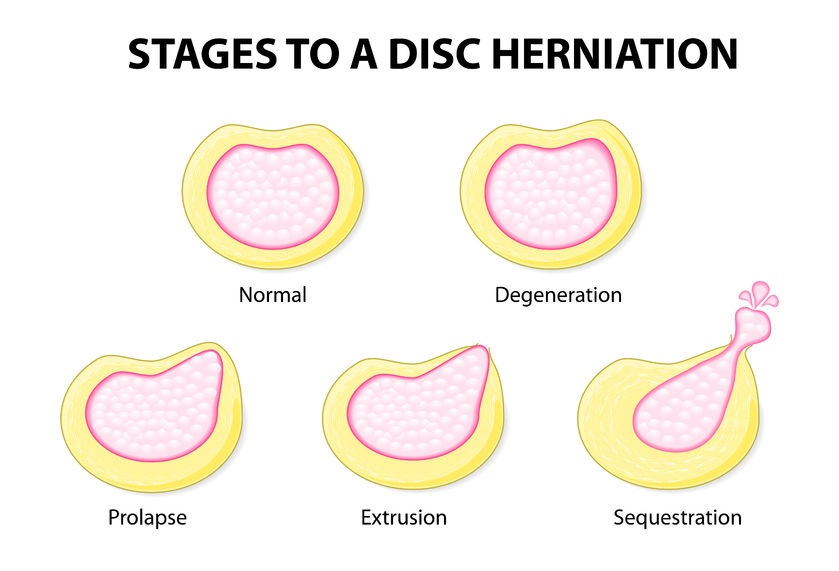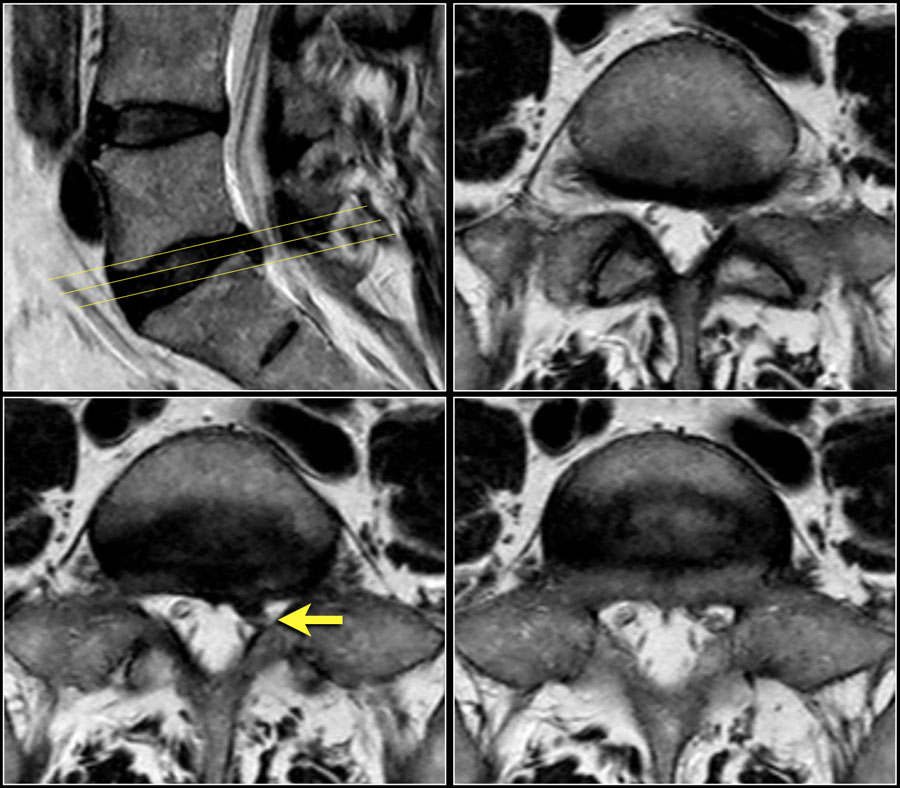What is a disc herniation?
Throughout the spine, discs provide a cushion from forces of daily life; walking, running, lifting etc. These discs consist of a fibrous outer layer and a fluid center. This allows discs to remain strong and flexible. However, overtime disc herniations can occur as discs wear down or are damaged if they are stressed too far.
Improper lifting form, accidents & trauma, or degeneration can cause discs to begin to fail. A disc herniation occurs as the fluid center of the disc begins to push through the fibrous outer layer. While many people have asymptomatic, minor disc bulges, advanced herniations can become extremely painful.
There are four types of disc herniation: degeneration, prolapse, extrusion, and sequestration. Overall, each phase is a progression of the previous phase. Degeneration begins with mild deformation and progresses to sequestration; a complete rupture of the fibrous layer that allows the disc’s center to break away.

Disc Herniation Symptoms
Symptoms can vary depending on the extent of damage. In early phases, there may be no symptoms. However, as phases progress symptoms will as well. Early complaints may be isolated to back pain, pain with coughing/sneezing, or pain with certain movements. Overtime this can progress from radiating pain into the arms or legs [with or without weakness] to loss of bowel control or other severe complications.
How are Disc Herniations Diagnosed?
First, any provider will start with a case history & exam. Depending on what started the initial pain and the pattern of symptoms, a provider will test a patient’s range of motion, strength, sensory, and reflexes. Oftentimes much of this is gathered in the case history. However, advanced imaging will be required for an official diagnosis [CT or MRI].

How are Disc Herniations Treated?
Initially, physical therapy and/or chiropractic care can conservatively treat disc herniations. These treatment options focus on restoring proper motion within the disc, strengthening surrounding muscles, and and working the disc fluid to a central position. Unfortunately, severe cases require surgery to repair. These options range from trimming the damaged disc to spinal fusion. Discs can continue to degenerate more rapidly without some form of care, leading to structural changes and arthritis in the spine.

